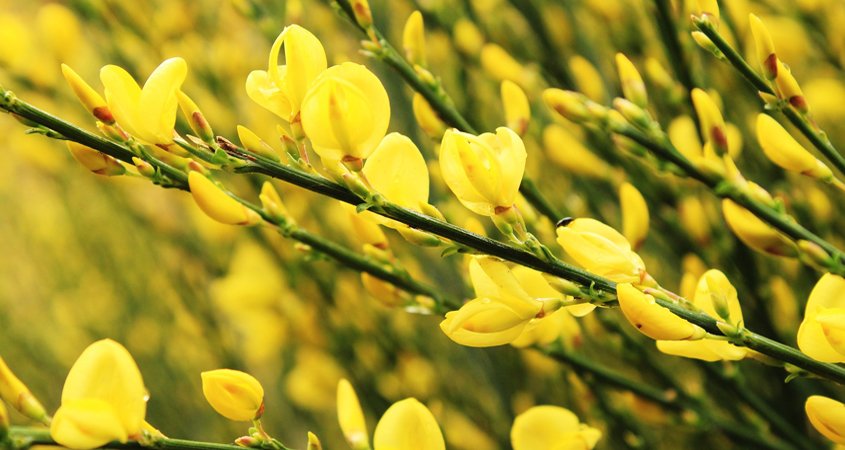 Scotch broom's blooms are pretty, but it is a non-native invasive species and should be avoided. Photo: Armen Nano/Pixabay
Scotch broom's blooms are pretty, but it is a non-native invasive species and should be avoided. Photo: Armen Nano/Pixabay Five Pushy Plant Pests To Avoid
San Diego County’s mild Mediterranean climate allows nearly any type of plants to flourish with adequate irrigation. But when non-native plants are planted alongside native plants, they do their best to take over. These are plant pests. The worst of them overrun valuable native plant species. They drain limited rainfall and soil nutrients away from native plants which have developed the ability to better manage limited resources. The natives are not as aggressive and can’t compete with the non-native bullies.
Public enemies of your landscaping

Brazilian pepper trees are invasive with damaging roots. They are non-native plants you should avoid in a watersmart landscape plan Photo: Sabine Schmidt/Pixabay
Plant pests
You may have planted a few of these common choices in your landscaping without knowing it. They are still sold commercially. These non-natives take up too much space to co-exist with native low-water use plants. If your landscaping gives pushy plant pests a home, remove them at the soonest opportunity.
- African Fountain Grass
- Periwinkle
- Brazilian Pepper Tree
- Scotch Broom
- Mexican Feather Grass
Very few non-native specific offer any benefits to the San Diego region’s environment. Local animals and insects prefer native species for food and habitat. Invasive species should also be removed from commercial nursery stock, and shouldn’t ever be planted in the first place. You can help weed them out by removing them.
How to identify non-native plants
The California Invasive Plant Council maintains a list of invasive plants that cause problems throughout the state. This list only addresses plants that are a problem and may miss regional problems. For a list, visit the Plant Right website.
This article is part of a year-long series inspired by the 71-page Sustainable Landscapes Program guidebook. The Water Authority and its partners also offer other great resources for landscaping upgrades, including free WaterSmart classes at WaterSmartSD.org.



